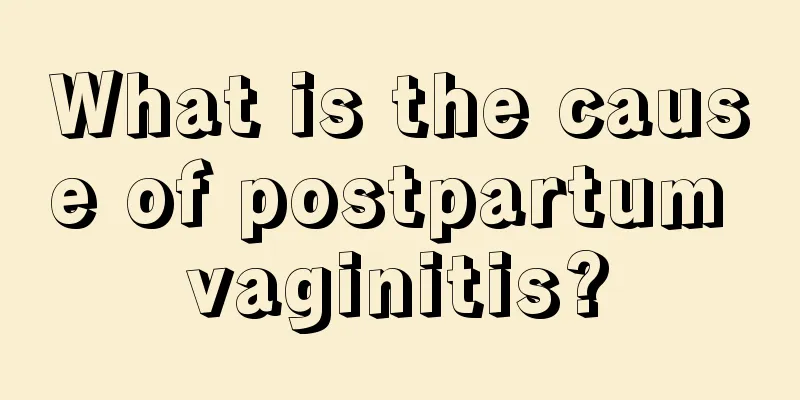What is the cause of postpartum vaginitis?

|
Vaginitis is an inflammation of the vaginal mucosa and submucosal connective tissue and is a common disease in gynecological clinics. The symptoms are a significant increase in abnormal vaginal secretions, which are thin, homogeneous or thin, pasty, grayish white, grayish yellow or milky yellow, and have a special fishy odor. Postpartum women are particularly weak and if they are not well cared for, it will have a great impact. So, what is the cause of postpartum vaginitis? Let us find out through the following article. Postpartum vaginitis is an inflammation caused by vaginal infection after a woman gives birth, and is more common in normal vaginal deliveries. Postpartum women suffering from vaginitis often experience uncomfortable symptoms such as vulvar itching and burning pain, which poses a great threat to their health. Therefore, mothers should actively prevent and promptly treat postpartum vaginitis. There are two types of postpartum vaginitis. A common cause is prolonged postpartum bleeding, decreased resistance, and bacterial invasion. Because there is a good bacterial culture medium in it, it is also very important to clean yourself and take a shower after delivery. Moreover, this type of postpartum vaginitis does not require treatment most of the time, because the blood stimulation will gradually subside on its own. However, if there is a foul odor or some abnormal vaginal discharge, you should seek medical treatment as soon as possible. Another type of vaginitis is vaginal dryness after cesarean section. This is because the bleeding time is relatively long and the vagina has not expanded through the fetal head, so sometimes it will feel very dry. It is generally recommended to use some medications after delivery to change this situation. Because we often see patients feel vaginal pain during follow-up examinations after cesarean section, which is related to the decrease in vaginal hormone levels and vaginal dryness, and is also a kind of inflammation. At this time, we use some drugs to protect the vaginal mucosa and allow it to rebuild the protection system. What is the cause of postpartum vaginitis? After reading the above article, I believe you have gained a certain understanding. In daily life, you should pay attention to wearing cotton underwear and change it frequently. The towel and basin for cleaning the vulva should be separate. Washed underwear should be placed in the sun to dry, not in the bathroom. Postpartum women with episiotomy incisions should try to lie on the opposite side to avoid lochia flowing into the incision, and keep the surface clean and dry at all times. |
<<: How to treat bilateral adhesion of fallopian tube fimbria in women
>>: What causes vaginal bleeding when straining during bowel movements?
Recommend
"Moles must be removed"? So, should moles be removed or removed?
Photo: Chen Yan, Li Jingyu, Zhejiang Provincial P...
What is the reason for the yellowish lochia?
Postpartum women must pay attention to the excret...
What causes vaginal odor in women?
The odor in the female vagina is probably caused ...
How to tell if the baby will have fair skin in the future? What are the factors affecting the baby's fair skin?
We all know that many mothers want to give birth ...
Five major symptoms of women before menopause, let’s take a look
Menopause is a problem that every woman will face...
Bleeding after taking Yuting
We all know that Yuting is a contraceptive pill t...
What is the reason for the cracking of latex paint on the wall? Do you need to deal with the cracking of latex paint?
For friends who have just completed the decoratio...
Female forehead yellow
In this world where looks matter, having a stunni...
Eating less sugar can really prevent cancer!
This article was reviewed by Dr. Guo Xiaoqiang, a...
I advise you to eat buckwheat as your staple food more often. One reason is enough!
When it comes to healthy staple foods, buckwheat ...
What causes bleeding nipples?
Nipple bleeding is a relatively abnormal conditio...
What are the early symptoms of uterine tumors?
Uterine tumors mostly refer to fibroids. Generall...
Unexplained infertility for 6 years and pregnancy
According to relevant statistics, there are more ...
Is it suitable for women to do yoga during menstruation?
Nowadays, there is more than one way for girls to...
What should I do if I have cervical pain during confinement?
The confinement period is a process of self-repai...









